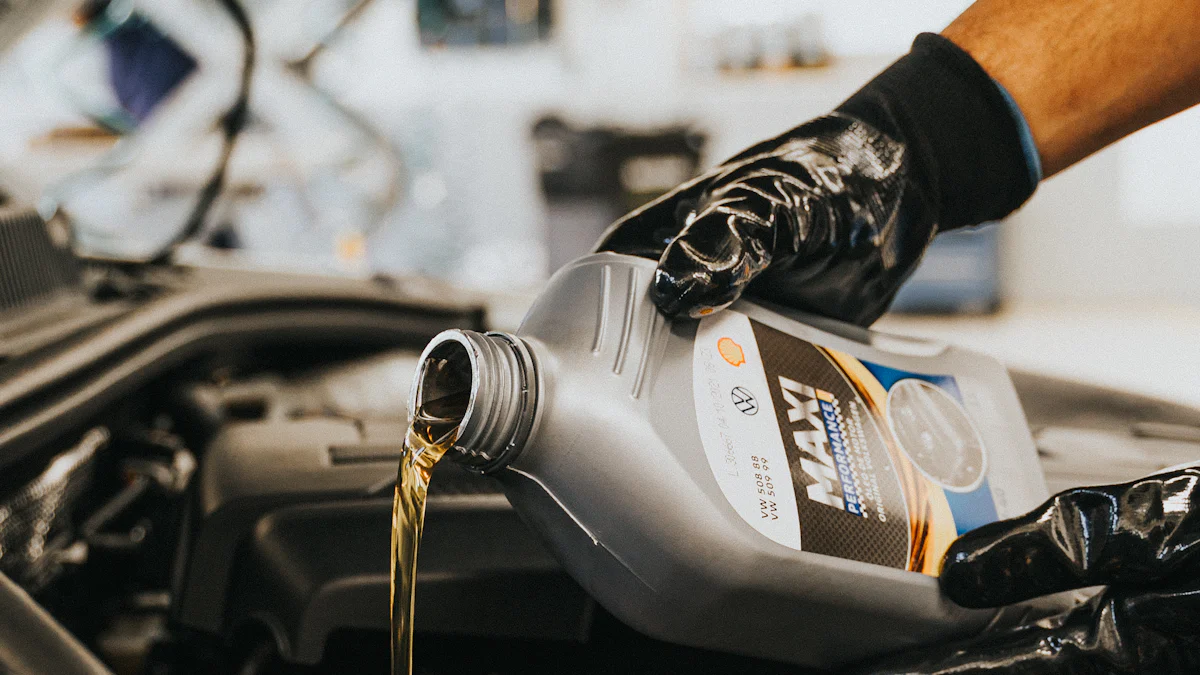
Maintaining your pallet truck is crucial for its longevity and performance. Understanding the process of refilling pallet truck oil is a key aspect of this maintenance routine. By ensuring that your pallet truck oil is regularly topped up, you can significantly extend the lifespan of your equipment. Additionally, keeping your pallet truck well-oiled enhances its efficiency and prevents unnecessary wear and tear. Let’s delve into the essential steps to refill oil in your pallet truck for optimal functionality.
Understanding Your Pallet Truck
When it comes to pallet trucks, understanding the intricacies of their components is essential for proper maintenance. Let’s delve into the crucial aspects of your pallet truck that relate to oil refilling.
Identifying the Oil Reservoir
Locating the oil reservoir on different models of pallet trucks can vary based on their design and make. Regularly checking this reservoir is vital to ensure optimal performance and longevity of your equipment.
Tools needed for the task
To successfully refill oil in your pallet truck, you will require specific tools tailored for this purpose. These tools are designed to facilitate a seamless refilling process, ensuring that your pallet truck operates efficiently.
Types of Oil Suitable for Pallet Trucks
Choosing the right type of oil for your pallet truck is paramount to maintain its functionality and prevent potential issues down the line.
Recommended oil types
Selecting from a range of recommended oils ensures that your pallet truck operates smoothly without any hindrances. The correct oil type guarantees optimal performance and longevity for your equipment.
Where to purchase the oil
Acquiring the suitable oil for your pallet truck is as crucial as selecting the right type. Knowing where to purchase this specific oil ensures that you use high-quality products that align with the manufacturer’s guidelines.
Step-by-Step Guide to Refill Oil
Preparing Your Pallet Truck
To ensure a successful oil refilling process for your pallet truck, it is essential to take the necessary preparatory steps.
Ensuring the truck is on a flat surface
Placing your pallet truck on a level surface guarantees stability during the oil refill. This simple step prevents any potential spills and ensures a smooth refilling process.
Cleaning the area around the oil reservoir
Before proceeding with refilling, cleaning the vicinity of the oil reservoir is crucial. Removing any dirt or debris prevents contamination of the new oil and maintains the integrity of your pallet truck.
Draining Old Oil
Removing old oil from your pallet truck is a critical step in the maintenance process to ensure optimal performance.
Steps to safely drain old oil
Carefully following specific steps guarantees a safe and efficient drainage process. By adhering to these guidelines, you prevent any spillage or damage to your equipment.
Proper disposal of used oil
Responsible disposal of used oil is paramount for environmental safety. Ensuring that you dispose of the old oil properly contributes to sustainability and good maintenance practices.
Refilling with New Oil
Refilling your pallet truck with fresh oil is the final step in this maintenance routine, ensuring smooth operation and longevity for your equipment.
How to pour the oil without spills
Pouring new oil into your pallet truck requires precision and care. Following proper pouring techniques minimizes spills and wastage, maintaining cleanliness during the refill.
Checking the oil level
Verifying the correct oil level after refilling is crucial for optimal performance. Monitoring this level ensures that your pallet truck operates efficiently without any issues.
Adding the correct amount of oil
Adding an appropriate amount of new oil guarantees that your pallet truck functions at its best capacity. Following manufacturer guidelines on quantity ensures proper lubrication for all components.
Final Checks and Maintenance Tips
Ensuring there are no leaks
- Inspect the pallet truck thoroughly for any signs of oil leaks.
- Check under the truck and around the oil reservoir to ensure there are no visible leaks.
- If any leaks are detected, promptly address them to prevent further damage.
Regular maintenance schedule
- Establish a consistent maintenance schedule for your pallet truck.
- Create a calendar reminder or set specific dates for routine checks and oil refills.
- Following a regular maintenance routine ensures that your equipment operates smoothly.
Pumping the handle to bleed air bubbles
- After refilling the oil, remember to pump the handle of your pallet truck.
- This action helps to eliminate any trapped air bubbles in the hydraulic system.
- By pumping the handle 10 to 15 times, you ensure optimal functionality of your equipment.
Troubleshooting Common Issues

When it comes to pallet truck oil, identifying and addressing common issues promptly is vital for the efficient operation of your equipment. Let’s explore some troubleshooting steps to tackle potential problems related to pallet truck oil.
Identifying Oil Leaks
Frontu Experts emphasize that pallet trucks are the backbone of material handling environments, underscoring the importance of regular maintenance. Detecting oil leaks early can prevent significant damage and ensure smooth functionality.
Common signs of oil leaks
- Puddles or stains under the pallet truck
- Unusual hydraulic system noises
- Reduced maneuverability or performance
How to fix minor leaks
- Inspect the oil reservoir and connections for loose fittings.
- Tighten any leaking components using appropriate tools.
- Wipe off excess oil and monitor for further leakage.
Addressing Performance Problems
Maintaining optimal levels of pallet truck oil is crucial for peak performance. Neglecting this aspect can lead to operational issues that hinder productivity.
Symptoms of insufficient oil
- Jerky movements during operation
- Difficulty in lifting heavy loads
- Increased wear on mechanical parts
Steps to resolve performance issues
- Check the oil level in the reservoir.
- Top up with the correct amount of oil as needed.
- Test the pallet truck after refilling to ensure smooth functionality.
- Monitor performance closely for any recurring issues.
In conclusion, maintaining the optimal pallet truck performance through regular oil refilling is paramount. Neglecting this essential task can lead to operational inefficiencies and potential breakdowns. A personal experience vividly illustrates how proper oil maintenance saved a critical day at work, emphasizing the significance of this routine. By adhering to the outlined steps diligently and consistently, individuals can ensure their pallet truck operates smoothly and efficiently, enhancing workplace productivity.
Post time: Jun-19-2024
